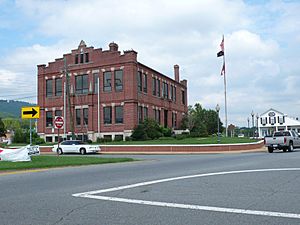National Register of Historic Places listings in Dade County, Georgia facts for kids
The National Register of Historic Places (NRHP) is a special list of important places in the United States. It helps protect buildings, sites, and objects that have a lot of history. Think of it like a hall of fame for historic places! When a place is on this list, it means it's recognized as important to our country's past.
Contents
What is the National Register of Historic Places?
The National Register of Historic Places is the official list of the nation's historic places worth saving. It is managed by the National Park Service. This list includes buildings, structures, objects, sites, and even entire historic neighborhoods.
Why are places listed?
Places are listed on the NRHP for many reasons. They might be important because of their history, like where a famous event happened. They could also be special because of their unique architecture or design. Listing a place helps people understand its value and encourages its preservation. It's a way to keep our history alive for future generations.
Historic Places in Dade County
Dade County, Georgia has some places on the National Register of Historic Places. These sites help tell the story of the county and its people. One important example is the Dade County Courthouse.
The Dade County Courthouse
The Dade County Courthouse is a historic building located in Trenton, Georgia. It sits right on Courthouse Square. This building has been a central part of the community for many years. It's where important government decisions are made and where many local records are kept.
The courthouse was built a long time ago, in 1926. Its design and age make it a significant landmark in Dade County. It was added to the National Register of Historic Places on September 18, 1980. This recognition means it's considered an important piece of history for both Dade County and the state of Georgia.
Preserving Our Past
Protecting historic places like the Dade County Courthouse is very important. These sites teach us about how people lived in the past. They show us how our towns and communities grew over time. By preserving them, we make sure that these stories and lessons are not forgotten. It helps us connect with our heritage and understand where we come from.


